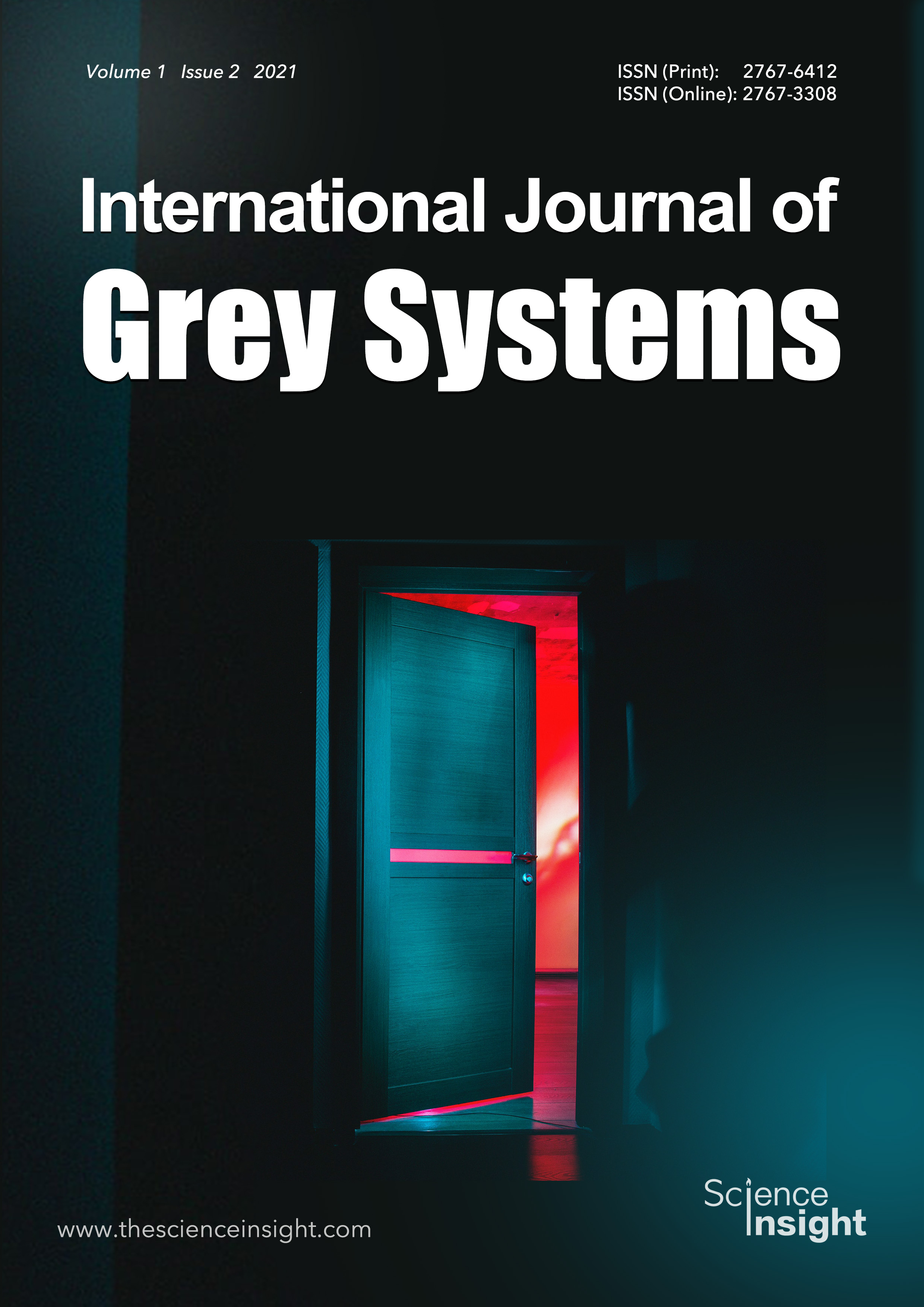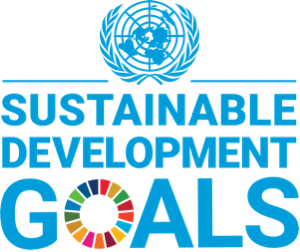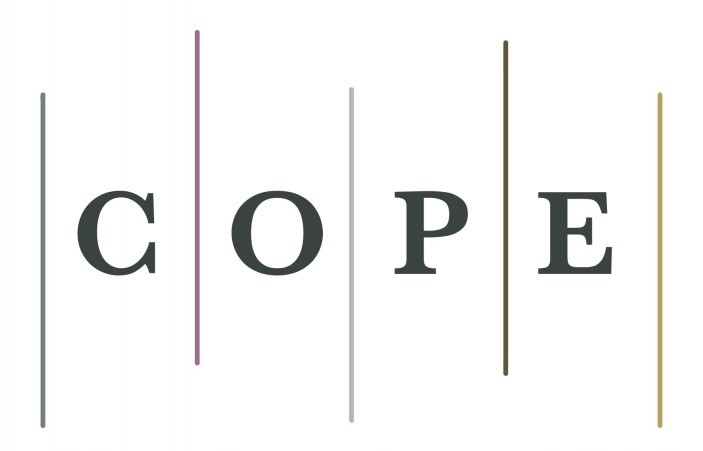Taguchi Grey Relational Optimization of the Multi-mechanical Characteristics of Kaolin Reinforced Hydroxyapatite: Effect of Fabrication Parameters
DOI:
https://doi.org/10.52812/ijgs.30Keywords:
Taguchi grey relational analysis, Optimization, Hydroxyapatite, Kaolin, Production parameters, Mechanical propertiesAbstract
Comparative study of kaolin reinforced hydroxyapatite (KHAp) and pure HAp using different production parameters has been done through traditional experimentation. However, the quantitative effect, optimization of kaolin reinforcement and fabrication parameters have not been investigated. Hence, this study examines the effect of kaolin reinforcement, compaction pressure and sintering temperature on the experimental mechanical properties of HAp. Taguchi design assisted by grey relational analysis was employed with L36 (2**2 3**1) orthogonal array. The Minitab 16 software was used to analyze the Taguchi design. The result showed a disparity in kaolin reinforcement as the optimum condition for individual mechanical properties, but the grey relational analysis showed better mechanical properties with kaolin reinforcement, 500 Pa compaction pressure and 1100 oC sintering temperature. The obtained result further revealed kaolin reinforcement as a strong and promising reinforcing material for high strength clinical application, having a contribution of 93.16% on compressive strength of HAp. Therefore, future studies can be conducted in the use of different wt% of kaolin on the multi-response mechanical characteristics of HAp.References
Abifarin, J. K. (2021). Taguchi grey relational analysis on the mechanical properties of natural hydroxyapatite: effect of sintering parameters. The International Journal of Advanced Manufacturing Technology, 117, 49–57. https://doi.org/10.1007/s00170-021-07288-9
Abifarin, J. K., Obada, D. O., Dauda, E. T., & Dodoo-Arhin, D. (2019). Experimental data on the characterization of hydroxyapatite synthesized from biowastes. Data in Brief, 26, 104485. https://doi.org/10.1016/j.dib.2019.104485
Abifarin, J. K., Suleiman, M. U., Abifarin, E. A., Fidelis, F. B., Oyelakin, O. K., Jacob, D. I., & Abdulrahim, M. Y. (2021). Fabrication of Mechanically Enhanced Hydroxyapatite Scaffold With the Assistance of Numerical Analysis. Research Square. https://doi.org/10.21203/rs.3.rs-717243/v1
Adeogun, A. I., Ofudje, A. E., Idowu, M. A., & Kareem, S. O. (2018). Facile Development of Nano Size Calcium Hydroxyapatite Based Ceramic from Eggshells: Synthesis and Characterization. Waste and Biomass Valorization, 9(8), 1469-1473. https://doi.org/10.1007/s12649-017-9891-3
Almetwally, A. A. (2020). Multi-objective Optimization of woven fabric parameters using Taguchi–Grey relational analysis. Journal of Natural Fibers, 17(10), 1468-1478. https://doi.org/10.1080/15440478.2019.1579156
Awodi, E., Ishiaku, U. S., Yakubu, M. K., & Abifarin, J. K. (2021). Experimentally Predicted Optimum Processing Parameters Assisted by Numerical Analysis on the Multi-physicomechanical Characteristics of Coir Fiber Reinforced Recycled High Density Polyethylene Composites. Research Square. https://doi.org/10.21203/rs.3.rs-591200/v1
Bademlioglu, A. H., Canbolat, A. S., & Kaynakli, O. (2020). Multi-objective optimization of parameters affecting Organic Rankine Cycle performance characteristics with Taguchi-Grey Relational Analysis. Renewable and Sustainable Energy Reviews, 117, 109483. https://doi.org/10.1016/j.rser.2019.109483
Bertazzo, S., Zambuzzi, W. F., Campos, D. D., Ogeda, T. L., Ferreira, C. V., & Bertran, C. A. (2010). Hydroxyapatite surface solubility and effect on cell adhesion. Colloids and Surfaces B: Biointerfaces, 78(2), 177-184. https://doi.org/10.1016/j.colsurfb.2010.02.027
Byrne, D., & Clore, G. L. (1970). A reinforcement model of evaluative responses. Personality: An International Journal, 1(2), 103–128. https://psycnet.apa.org/record/1972-08748-001
Caliman L. B., Silva S. N. and Junkes J. A. (2017). Ostrich Eggshell as an Alternative Source of Calcium Ions for Biomaterials Synthesis. Materials Research, 20(2), 413-417. https://doi.org/10.1590/1980-5373-MR-2016-0368
Chang, S.-H., Hwang, J.-R., & Doong, J.-L. (2000). Optimization of the injection molding process of short glass fiber reinforced polycarbonate composites using grey relational analysis. Journal of Materials Processing Technology, 97(1-3), 186-193. https://doi.org/10.1016/S0924-0136(99)00375-1
Chen, P. Y., Lin, M. L., & Zheng, Z. (1997). On the origin of the name kaolin and the kaolin deposits of the Kauling and Dazhou areas, Kiangsi, China. Applied Clay Science, 12(1-2), 1-25. https://doi.org/10.1016/S0169-1317(97)00007-0
German, R. M. (2010). 1 - Thermodynamics of sintering. In Sintering of Advanced Materials (pp. 3-32). Woodhead Publishing. https://doi.org/10.1533/9781845699949.1.3
Javed, S. A. (2019). A novel research on grey incidence analysis models and its application in project management (doctoral dissertation). Nanjing University of Aeronautics and Astronautics, Nanjing, P.R. China.
Javed, S. A., Khan, A. M., Dong, W., Raza, A., & Liu, S. (2019). Systems evaluation through new grey relational analysis approach: an application on thermal conductivity—petrophysical parameters’ relationships. Processes, 7(6), 348. https://doi.org/10.3390/pr7060348
Julong, D. (1989). Introduction to grey system theory. The Journal of Grey System, 1(1), 1-24.
Kuang, X., Carotenuto, G., & Nicolais, L. (1997). A review of ceramic sintering and suggestions on reducing sintering temperatures. Advanced Performance Materials, 4(3), 257-274. https://doi.org/10.1023/A:1008621020555
Lahiri, D., Ghosh, S., & Agarwal, A. (2012). Carbon nanotube reinforced hydroxyapatite composite for orthopedic application: a review. Materials Science and Engineering: C, 32(7), 1727-1758. https://doi.org/10.1016/j.msec.2012.05.010
Mahmoudi, A., Javed, S. A., Liu, S., & Deng, X. (2020). Distinguishing coefficient driven sensitivity analysis of GRA model for intelligent decisions: application in project management. Technological and Economic Development of Economy, 26(3), 621-641. https://doi.org/10.3846/tede.2020.11890
Murray, H. H. (1980). Major kaolin processing developments. International Journal of Mineral Processing, 7(3), 263-274. https://doi.org/10.1016/0301-7516(80)90022-8
Obada, D. O., Dauda, E. T., Abifarin, J. K., Bansod, N. D., & Dodoo-Arhin, D. (2021). Mechanical measurements of pure and kaolin reinforced hydroxyapatite-derived scaffolds: A comparative study. Materials Today: Proceedings, 38, 2295-2300. https://doi.org/10.1016/j.matpr.2020.06.412
Obada, D. O., Dauda, E. T., Abifarin, J. K., Dodoo-Arhin, D., & Bansod, N. D. (2020). Mechanical properties of natural hydroxyapatite using low cold compaction pressure: Effect of sintering temperature. Materials Chemistry and Physics, 239, 122099. https://doi.org/10.1016/j.matchemphys.2019.122099
Orlovskii, V. P., Komlev, V. S., & Barinov, S. M. (2002). Hydroxyapatite and hydroxyapatite-based ceramics. Inorganic Materials, 38(10), 973-984. https://doi.org/10.1023/A:1020585800572
Posner, A. S., Perloff, A., & Diorio, A. F. (1958). Refinement of the hydroxyapatite structure. Acta Crystallographica, 11(4), 308-309. https://doi.org/10.1107/S0365110X58000815
Ross, P. J. (1996). Taguchi Techniques for Quality Engineering: Loss Function, Orthogonal Experiments, Parameter and Tolerance Design. New York: McGraw–Hill Publishing Company Ltd.
Santos, J. D., Knowles, J. C., Reis, R. L., Monteiro, F. J., & Hastings, G. W. (1994). Microstructural characterization of glass-reinforced hydroxyapatite composites. Biomaterials, 15(1), 5-10. https://doi.org/10.1016/0142-9612(94)90188-0
Schroeder, P. A., & Erickson, G. (2014). Kaolin: From ancient porcelains to nanocomposites. Elements, 10(3), 177-182. https://doi.org/10.2113/gselements.10.3.177
Seward, J. P. (1956). Reinforcement and expectancy: two theories in search of a controversy. Psychological Review, 63(2), 105. https://doi.org/10.1037/h0045433
Singh, J., Chatha, S. S., & Singh, H. (2021). Characterization and corrosion behavior of plasma sprayed calcium silicate reinforced hydroxyapatite composite coatings for medical implant applications. Ceramics International, 47(1), 782-792. https://doi.org/10.1016/j.ceramint.2020.08.189
Singh, S., Pandey, K. K., Islam, A., & Keshri, A. K. (2020). Corrosion behaviour of plasma sprayed graphene nanoplatelets reinforced hydroxyapatite composite coatings in simulated body fluid. Ceramics International, 46(9), 13539-13548. https://doi.org/10.1016/j.ceramint.2020.02.139
Sylajakumari, P. A., Ramakrishnasamy, R., & Palaniappan, G. (2018). Taguchi grey relational analysis for multi-response optimization of wear in co-continuous composite. Materials, 11(9), 1743. https://doi.org/10.3390/ma11091743
Taguchi, G. (1993). Taguchi on Robust Technology Development: Bringing Quality Engineering Upstream. New York: ASME Press.
Taguchi, G., & Phadke, M. S. (1989). Quality engineering through design optimization. In Quality Control, Robust Design, and the Taguchi Method (pp. 77-96). Springer, Boston, MA. https://doi.org/10.1007/978-1-4684-1472-1_5
Taguchi, G., Chowdhury, S., Wu, Y., Taguchi, S., & Yano, H. (2005). Taguchi's quality engineering handbook. Wiley-Interscience.
Zhao, X., Chen, X., Zhang, L., Liu, Q., Wang, Y., Zhang, W., & Zheng, J. (2018). Preparation of nano-hydroxyapatite coated carbon nanotube reinforced hydroxyapatite composites. Coatings, 8(10), 357. https://doi.org/10.3390/coatings8100357
.

Downloads
Published
How to Cite
Issue
Section
License
Copyright (c) 2021 Science Insight

This work is licensed under a Creative Commons Attribution-NonCommercial 4.0 International License.
Creative Commons Non Commercial CC BY-NC: The work is distributed under the terms of the Creative Commons Attribution-NonCommercial 4.0 License which permits non-commercial use, reproduction and distribution of the work without further permission provided the original work is properly attributed.











